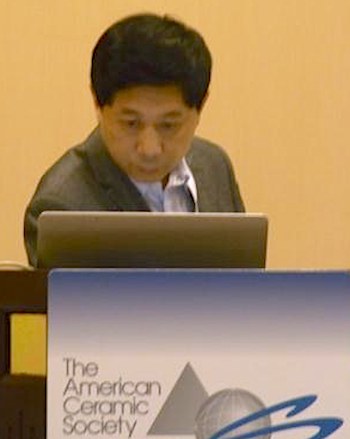
Most of the presentations I attended in the past three days were given by researchers from universities and national labs, which often were more about basic science and less about profitability and commercial applications. I thought it would be nice to get some perspectives from industrial researchers.
With this in mind, I listened to some talks given by industrial scientists. Industrial research tends to focus more on solving practical problems in the marketplace, upgrading products, and commercializing basic science research results and technologies. Both industrial and academic research play important roles in the development of science and technology. Academic research is usually ahead of industrial research, acting as a guide. Research done in the university or lab may have a long way to go before commercialization. Successful industrial research brings benefits to the lives of consumers and also supports the academic research financially. In a way the two are like younger and older brothers.
As I commented on the first day, energy is one of the most important research topics. Most talks today were by scientists aiming to develop better materials for dye-sensitized solar cells. Materials such as quantum dots, conductive polymer/metal oxide composites, doped metal oxides, and carbon nanotubes have been introduced as solar electrode materials with improved efficiency and stability.

PACRIM 10 chair H.T. Lin (left) “passes the torch” by presenting a ceramic piece to Hai-Doo Kim of The Korean Ceramic Society, host organization for the next PACRIM event. Credit: ACerS
The solar cell printing technology presented by Dr.Yi-Bing Cheng from Monash University (in photo above; credit: ACerS) was exciting to me, too. In his lab, not only can electrode materials be directly printed layer by layer on various substrate materials such as plastic and steel, but cell sealing and electrolyte filling are done automatically by machine. Based on his video, the whole process highly resembles an industrial production line and should be possible on a larger scale. Other advantages include no clean room or vacuum requirements and high printing speed (15 seconds per piece), all of which further drives down cost. I am looking forward to seeing the light, thin plastic solar panels on the car or steel solar cell on the roofs of houses in a near future.
I have to say, the conference banquet held on the beach was terrific, with live music, tasty food, surging waves, smiling faces, and the joyful conversation of new and old friends. ACerS president Dr. Richard Brow acknowledged PACRIM chair Dr. H.T. Lin for his tremendous efforts in making this meeting possible by presenting him with a delicate ceramic pot—exactly the focus of the entire conference.
In a ceremony similar to the torch passing convention of the Olympics, a larger ceramic pot was presented to the next host country, Korea. The larger pot was passed to Korean Ceramic Society representative Hai-Doo Kim, it was delivered with best wishes for a better and better PACRIM.
It was such an amazing day. All I want to say is: PACRIM Rocks, ACerS rocks!
Spotlight Categories
- Meeting Highlights


